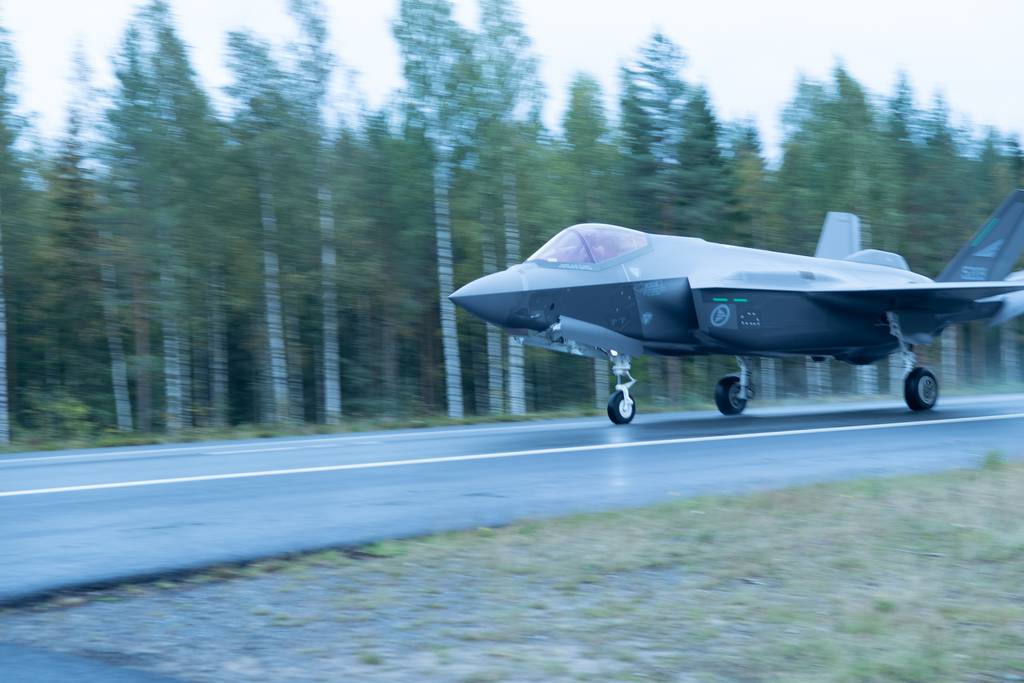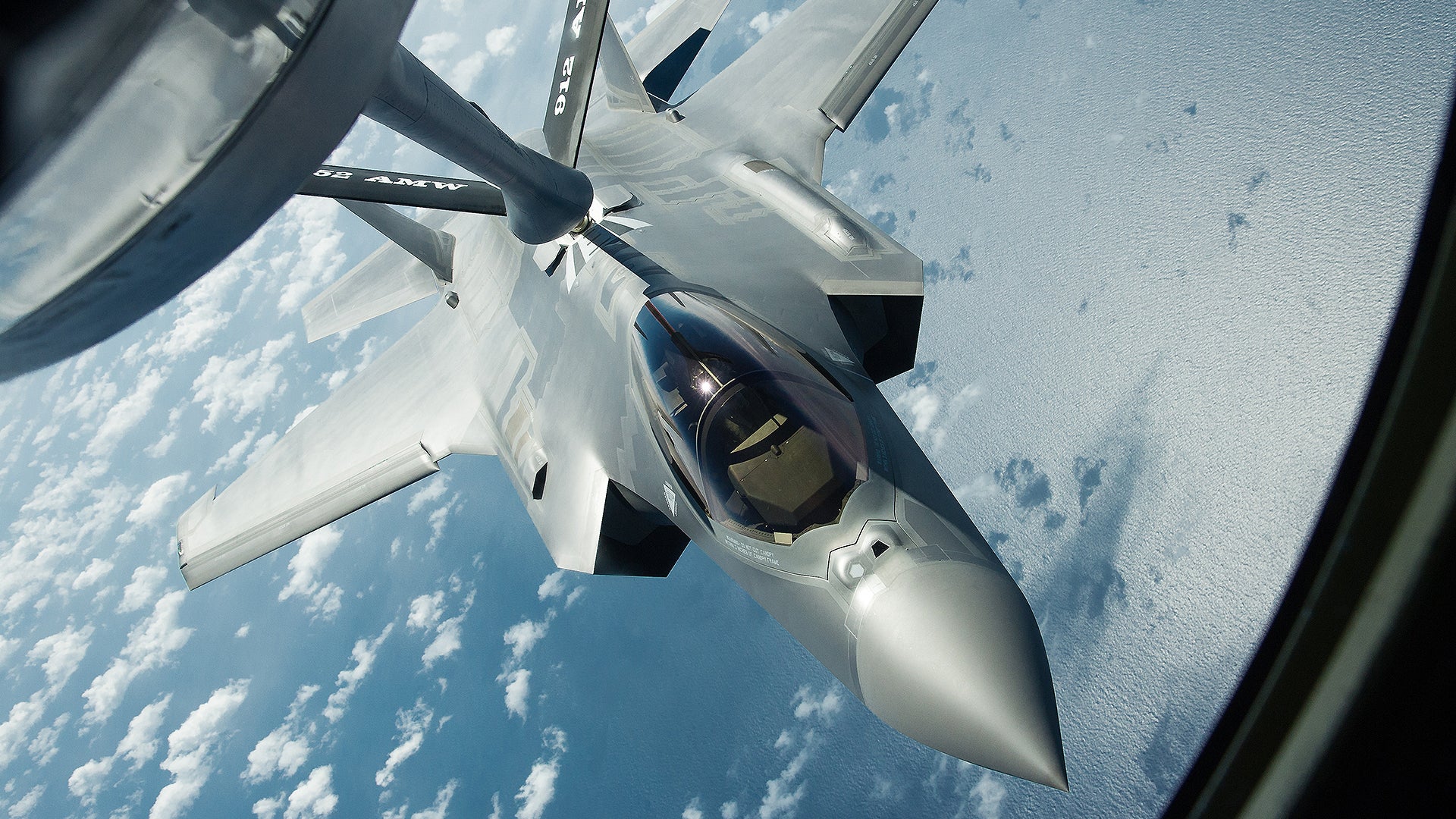Forest Green
ACCESS: Above Top Secret
- Joined
- 11 June 2019
- Messages
- 5,102
- Reaction score
- 6,697
Dunno, ask a radar.Since it sports the splinter camo it should be one of the birds dedicated to Aggressor squadron. Does the paint job interfere with the RAM paint?

Thoroughly disgruntled, but what can you do?
Not me.What are you disgruntled about and why?
The Russian ruling class, to be precise.I wonder what the Russians reaction to that will be?
Everybody gangster till the trees start speaking Vietnamese, the mountains start speaking Pashtu, and the snow starts speaking Finnish.Thoroughly disgruntled, but what can you do? NATO Article 5, plus the last expedition into Finland wasn't much of a success.
I used to think that the heaviest F-35 was the B model due to the fact of the lift fan but now I know that it is the C model due to the bulkheads.
That's odd. Does the -B have a larger fan section or something, in addition to the Liftfan up front? Or is the non-afterburning takeoff that much less fuel burned?F-35C also has a twin rather than single nose wheel, tail hook and the larger wings. All in its 2,500 lbs heavier than a B and 4,500 lbs heavier than an A. Carries upto 1,500 lbs more internal fuel than an A but the same maximum payload capacity. B for some reason though has better gas mileage (just has smaller internal tanks) I presume as the lift fan assists during takeoff.
A: 8.29 lbs of fuel per km
B: 7.94 lbs of fuel per km
C: 8.97 lbs of fuel per km
As has been mentioned, those combat range figures are for user specific profiles. Meaning they are not combarable. F.e. the F-35A demonstrated a 760nm radius for an A/A profile at optimal altitude/speed settings.
The stated ferry range numbers are pretty much useless. They are derived from doubling the minimal combat radius requirements - 600, 450, 600nm for the A, B and C models, also for user specific profiles.
I mean, who thinks ferry range is actually less than combat range?
Does the paint job interfere with the RAM paint?
Ahhah.I don't know that there's a whole lot of reinforced structure unique to the -C model. Only parts I'm positive are different are the larger wings and catapult bar twin wheel nose landing gear. The mains may well be unique to the -C as well, but I haven't seen anything that says so.
Also, every short landing looks like the typical Navy landing. Full flaps, high sink rate, plant the main gear on the numbers and have the speedbrakes pop as soon as there is weight on the wheels.
Like, what's the difference for Russia?So a F-35 assembly line is going to be set up in Finland, I wonder what the Russians reaction to that will be?
I was honestly disappointed when the local Air Guard base had an airshow and didn't get the USMC F-35B demo pilot to come. I mean, it was cool to see the F-35A fly live (never seen one live before, it had more bass rumble than the flight of 4 Thunderbirds in F-16s), but I wanted to see the weird stuff happen!Ahhah.
The irony is that for all the hate B model gets - it was neither the most difficult to develop(aside from alcoa story), nor the most different from the basic one, nor the most problematic.
All the goes to C-.
Not Finnished, gotta another 3 days and since I'm not Russian, I'm taking my time....Everybody gangster till the trees start speaking Vietnamese, the mountains start speaking Pashtu, and the snow starts speaking Finnish.
The pure clean configuration of the A with no external stores has a maximum of 1390nm so that 760nm A/A must have been with drop tanks and so not comparable to the internal fuel only figures. The set of figures given by Lockheed/Air Force are purely on internal fuel.
because there are no drop tanks for the F-35.
No, it's internal fuel only, because there are no drop tanks for the F-35. At least currently let alone in 2016. (page 7)
The increase from 669 for the USAF profile to 760nm is the result of optimised speed and altitude settings.
Btw, there was also a similar briefing for Norway for an optimised A/G profile, but can't find it anymore.

Everybody gangster till the trees start speaking Vietnamese, the mountains start speaking Pashtu, and the snow starts speaking Finnish.
...and the sunflowers start speaking Ukrainian.Everybody gangster till the trees start speaking Vietnamese, the mountains start speaking Pashtu, and the snow starts speaking Finnish.
... and the concrete brutalistic towerblocks start producing a rather brutal-sounding combination of a plethora of exotic consonants and just two vowel phonemes with an absolutive-ergative syntactic structure and an enormous morphology which we know as the Chechen language. On a more serious note, is Australia considering to purchase F-35B to operate from the HMAS Canberra?...and the sunflowers start speaking Ukrainian.
NoOn a more serious note, is Australia considering to purchase F-35B to operate from the HMAS Canberra?
On a more serious note, is Australia considering to purchase F-35B to operate from the HMAS Canberra?
Seems odd that they aren't...
Depending on how well Japanese use of the F-35B goes on their light carriers (err... helicopter destroyers to not offend those bothered by the prospect of Japan having aircraft carriers again), I imagine Australia might be convinced in a few years to buy some F-35Bs. I believe some statements have been made about HMAS Canberra not being suitable for STOVL aircraft use but considering the parent design regularly operated AV-8 Harriers I don't think it would be too expensive to make the necessary modifications to the ship.Given Australia's large amount of Pacific and Indian oceans it has to patrol I find it surprising the RAN wouldn't try to go for some sort of light-carrier using F-35Bs.
I'm sure those expert pilots can make a good argument, but I'd have to imagine the F-35A is still significantly more agile than the F-35C although the later might be better at a purely sustained turn. But I'd expect the F-35C to indeed have greater range and the ability to loiter in the area for longer, which for the last several sort of wars we've been in has been the more useful capability. Trying to predict how things will work in the next war though is always risky business.It is a .mil link, that's probably why. Here is the relevant screenshot. As I said, the C's profile involves loitering for the carrier landing pattern which takes up some range. I will also make note of the comments by several F-35 pilots, most notably Billie Flynn on the Afternburn Podcast, that " the A was really meant to have the C's wings". This indicates that there is a tangible range benefit to the C's wings that outweigh extra drag and weight.
View attachment 721517
I'm more offended by the attempt to pass them off as some kind of destroyer.(err... helicopter destroyers to not offend those bothered by the prospect of Japan having aircraft carriers again)
It's interesting, because there were 460 gal drop tanks planned in the early days, then they were dropped (pun intended) because of some development issues. Supposedly the inner wing stations, at least on the A and I models, are plumbed for tanks. As of 2019, the Israelis were interested in even larger external tanks (600 gal) to get to Iran with less tanker support.

Lockheed Eyes Giving F-35s More Gas With Drop Tanks And That's A Very Good Thing
The external tanks could give F-35s significantly valuable extra range and loiter time for certain key missions and circumstances.www.twz.com
The Israelis are/were working on an 600 gal tank. A more recent source from 2021. It might be done by now, if so, they managed to keep it a secret.
The Super Hornet's 480 gal tanks were supposed to be certified for the F-35, but that didn't work as the link says. Later redesigned to a 426 gal tank, then dropped.
The Israelis are/were working on an 600 gal tank. A more recent source from 2021. It might be done by now, if so, they managed to keep it a secret.
I've got to question the utility of LO drop tanks. It seems to me like if you're flying a high-threat mission that requires you to be as stealthy as possible you can afford the expensive of actually dropping the tanks and probably the pylon once that fuel is gone. But eliminating the increased RCS from the exposed pylon attachment points seems like it might be an impossible problem to solve.
I mean, the KF-21 is doing some things with a raised "berm" around the tailhook and maybe in front of the conformal missiles.That's the challenge for sure. I suspect you can't match the RCS of an aircraft that has those covered properly on the ground. But you should be able to improve on bare fittings at least.
But you should be able to improve on bare fittings at least.
